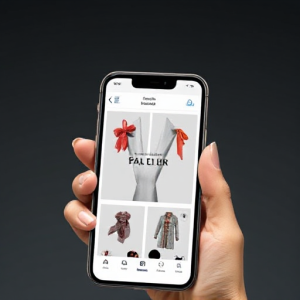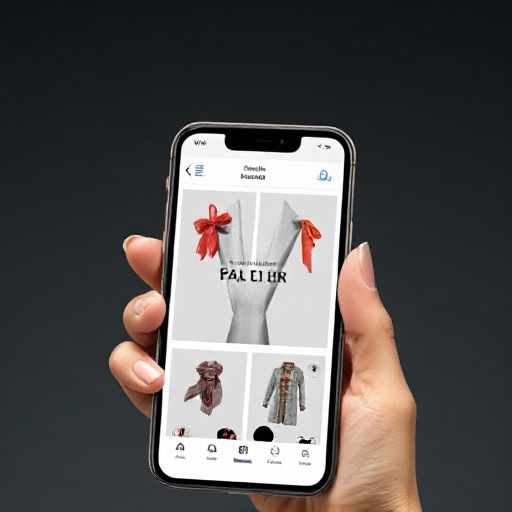
Mobile devices have become the primary source of information, entertainment, and shopping for many consumers. The fashion industry, like every other sector, is increasingly catering to this mobile-first culture. Mobile-friendly fashion marketing is no longer just a trend; it’s a necessity for businesses to stay relevant and competitive.
In this article, we’ll explore what mobile-friendly fashion marketing is, why it’s important, and how fashion brands can implement effective strategies to engage their audience and drive sales.
What is Mobile-Friendly Fashion Marketing?
Mobile-friendly fashion marketing refers to the adaptation of marketing strategies to cater to consumers who primarily use smartphones, tablets, and other portable devices. This approach ensures that content, advertisements, websites, and online stores are optimized for mobile use, providing a seamless and engaging experience for customers.
Fashion marketing includes promoting brands, products, and experiences, and when mobile-optimized, it helps fashion businesses reach potential customers where they are spending most of their time – on their mobile devices.
The Importance of Mobile-Friendly Fashion Marketing
The rise of mobile usage has dramatically reshaped consumer behavior, particularly in the fashion industry. Here’s why mobile-friendly marketing is so crucial:
1. Changing Consumer Habits
With an increasing number of people using smartphones for shopping, browsing, and social media engagement, mobile devices are now central to how consumers make purchasing decisions. According to studies, over 60% of all internet traffic comes from mobile devices, and this number continues to rise.
2. On-the-Go Shopping
Fashion shoppers are more likely to engage with brands while on the go. Whether commuting, waiting for a coffee, or during lunch breaks, people are scrolling through social media and shopping on mobile apps. A mobile-friendly marketing approach makes it easier for brands to capture attention in these micro-moments.
3. Improved User Experience
A seamless user experience on mobile devices can increase customer retention. Websites or apps that load quickly, are easy to navigate, and have mobile-responsive layouts are more likely to drive conversions.
4. Social Media Dominance
Platforms like Instagram, TikTok, and Pinterest are major hubs for fashion marketing, and these platforms are primarily accessed via mobile devices. Fashion brands must ensure their content is optimized for these platforms, which are designed to be visually engaging and easy to interact with on mobile.
5. Google’s Mobile-First Index
Google now uses mobile versions of websites as the primary version for indexing and ranking. If a fashion website is not mobile-friendly, it could be penalized in search rankings, reducing visibility and organic traffic. This highlights the importance of having a responsive, mobile-optimized site.
Key Strategies for Mobile-Friendly Fashion Marketing
1. Mobile-Optimized Website Design
A responsive design is essential to ensure that your fashion website looks great and functions well on all mobile devices. Here are some critical design elements:
- Simplified Layouts: Mobile screens are smaller, so your website’s layout should be clean, with easy-to-read fonts and well-spaced elements. Avoid clutter.
- Fast Loading Speed: Mobile users expect quick loading times. Slow pages lead to high bounce rates and lost sales. Compress images, minimize scripts, and use mobile-friendly technologies like AMP (Accelerated Mobile Pages).
- Touch-Friendly Navigation: Since mobile users interact via touch, buttons, menus, and links should be easy to tap. Make sure that clickable elements are large enough and spaced to avoid frustration.
- Optimized Checkout Process: Simplify the checkout process on mobile devices by reducing the number of steps. Offering payment options like mobile wallets (Apple Pay, Google Pay) can also enhance the user experience.
2. Mobile-Friendly Content
Visual content is crucial for fashion marketing, and mobile users love high-quality images and videos. However, these visuals must be optimized for mobile viewing:
- High-Resolution Images: Use images that load quickly but still maintain quality. Mobile devices often have high-resolution screens, so images should be clear and vibrant.
- Video Marketing: Short-form video content works particularly well for mobile audiences. Platforms like Instagram Stories, TikTok, and YouTube Shorts are perfect for fashion brands to showcase products, behind-the-scenes looks, or styling tips.
- Text Formatting: Avoid long blocks of text. Use short paragraphs, bulleted lists, and engaging headings that are easy to read on a small screen.
3. Mobile Advertising
Fashion brands can leverage mobile ads to increase visibility and drive traffic to their websites. Here are some strategies:
- In-App Advertising: Many mobile users engage with apps, so running ads on popular mobile platforms can help brands reach their target audience. Fashion apps, lifestyle apps, and social media platforms are great places to advertise.
- Location-Based Targeting: Mobile advertising allows for location-based targeting. Fashion brands can use geolocation technology to promote store events or flash sales to nearby consumers.
- Push Notifications: Push notifications can engage users with personalized offers, updates, or discounts. However, it’s essential to strike a balance—too many notifications can lead to unsubscriptions.
4. Social Media Integration
Social media platforms have become essential tools for fashion marketing, and they’re all optimized for mobile use. Integrating your social media with your website and mobile app can provide a smooth experience for users.
- Instagram Shopping: Instagram has become one of the leading platforms for fashion brands to showcase their products. By setting up an Instagram Shop, users can click on products directly in posts or stories to make a purchase without leaving the app.
- Shoppable Ads: Run shoppable ads on Facebook, Instagram, or Pinterest, allowing users to purchase items directly from the ad with a simple tap.
- User-Generated Content: Encourage customers to share their outfits on social media with branded hashtags or contests. User-generated content is a great way to build brand loyalty and trust.
5. Influencer Marketing
Fashion brands often collaborate with influencers to market their products. Influencers typically have a large mobile-following, so it’s crucial that they promote content that’s mobile-friendly:
- Influencers on Mobile-First Platforms: Partnering with influencers on platforms like TikTok and Instagram ensures that your brand gets exposure in spaces where users are already engaging via mobile.
- Mobile-Specific Campaigns: Design campaigns that influencers can easily share through mobile-friendly formats like Stories, Reels, and short videos.
6. Customer Reviews and Testimonials
Mobile consumers often rely on reviews before making a purchase. Making these reviews easy to access and visible on your mobile site or app can help boost consumer confidence:
- Star Ratings: Display star ratings and customer reviews prominently on product pages.
- Mobile-Friendly Review System: Make sure the process of leaving a review is simple and mobile-optimized, enabling users to leave feedback directly from their phones.
Mobile-friendly fashion marketing is essential in today’s digital-first world. As mobile devices continue to dominate online activities, fashion brands must ensure their marketing strategies are optimized for mobile users to stay competitive. From responsive website designs to social media integration and influencer partnerships, mobile-friendly marketing allows fashion businesses to create a seamless, engaging experience for consumers, ultimately driving conversions and boosting brand loyalty.
By focusing on speed, simplicity, and mobile-optimized content, fashion brands can create meaningful connections with their audience, no matter where they are or what device they’re using.
